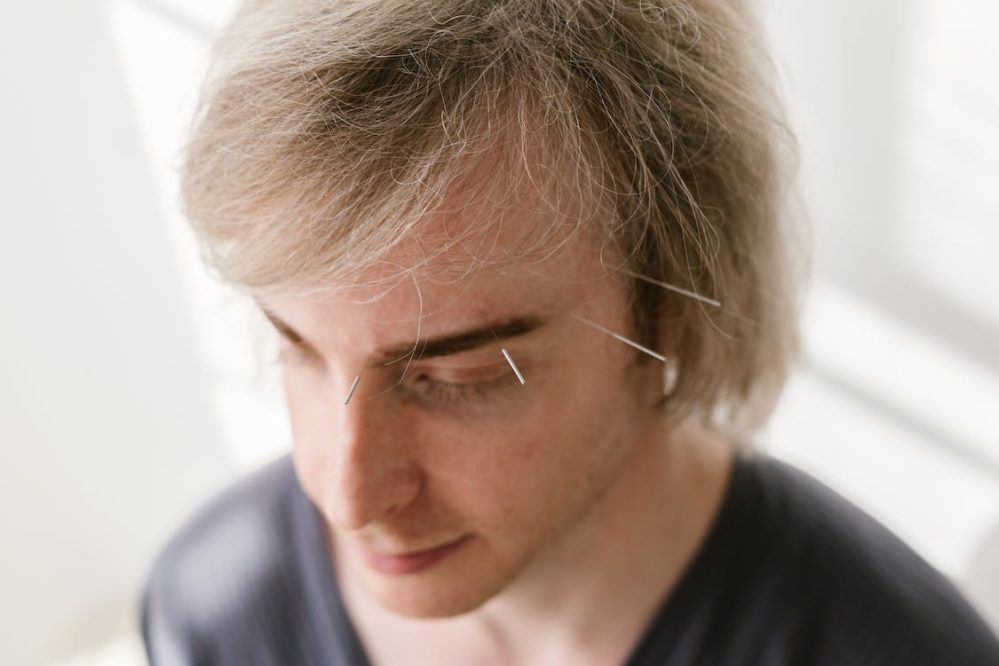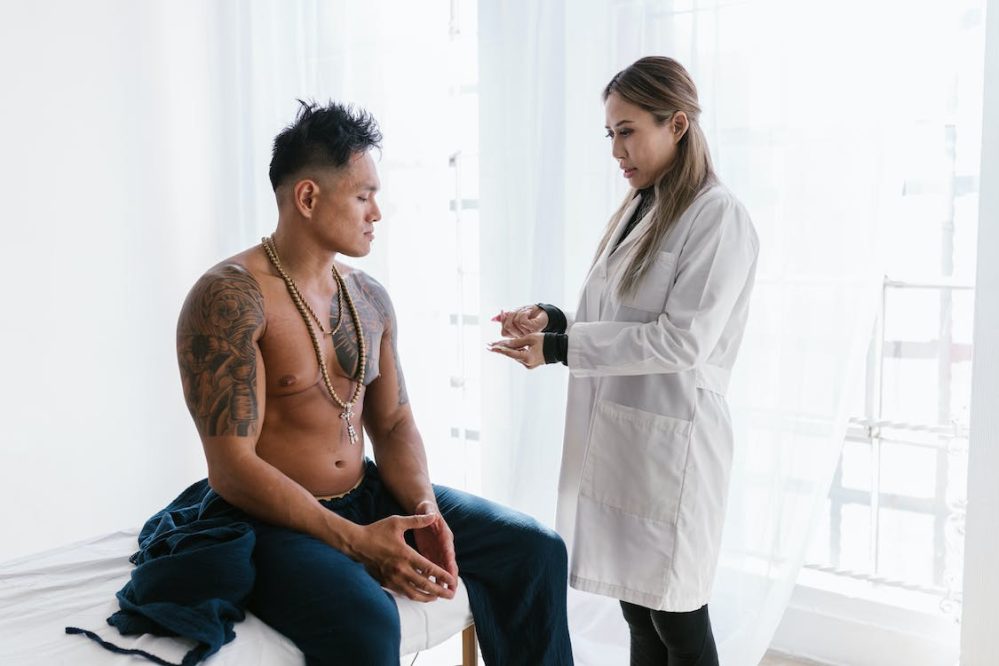Characterized by severe and recurrent throbbing pain, usually on one side of the head, to this day, migraines affect millions worldwide.
Despite conventional solutions, through drug therapy, many migraine sufferers are constantly seeking alternative approaches for pain relief. Acupuncture, the most common form of traditional medicine practice, has gained popularity for its benefits in preventing migraines.
Read on to discover this ancient art of Chinese medicine, its underlying principles, and other important factors for those considering acupuncture for migraines.
Understanding Acupuncture
According to the Chinese Meridian theory, the human body consists of meridians or channels where the energy (Chinese: qi) flows, the disruption of which causes pain. As a traditional Chinese remedy, acupuncture is the practice of jabbing the skin with thin metallic needles in specific areas to improve the flow of “qi” and ease the pain.
Acupuncture emerged as a substitute treatment to avoid potentially harmful medication drugs such as opiates. People who practice acupuncture are called acupuncturists.
What to Know Before You Try Acupuncture for Migraine Relief
Before trying acupuncture to ease migraines, here is what you need to know.
It is not for everyone: It is important to note that acupuncture is not all-embracing. Talk to your doctor to understand if you qualify for this treatment and proceed with a qualified acupuncturist.
It is safe: A myriad of studies approve of acupuncture. The National Institute for Health and Care Excellence (NICE) recognizes acupuncture as a preventive treatment for migraines.
It doesn’t hurt: Contrary to many myths about acupuncture, you should know that when done carefully by a trained acupuncturist, undergoing acupuncture is painless. Patients merely feel a sense of tingling upon needle insertion.
Cost considerations: Health insurance often does not include coverage for acupuncture sessions, so you should be mindful of the expenses.
How Does Acupuncture for Migraines Work?
Despite being used for centuries to cure various medical conditions, including migraines, how acupuncture works is still a subject of ongoing medical research. However, it is thought to stimulate the release of endorphins in the brain, thus relieving the pain associated with migraines. Regulating the nervous system, which governs aspects like blood flow, muscle tension, and stress responses, leads to a reduction in the intensity and frequency of migraines.
Acupuncture Treatment Process
The acupuncture treatment process begins with an initial consultation and evaluation, followed by subsequent sessions. Consultations are vital for a better understanding of the patient’s medical records and any necessary precautions to consider. Only then do acupuncture sessions commence, usually in private and comfortable treatment rooms.
Initial Consultation and Assessment
Before acupuncture sessions, patients must sit down with a licensed acupuncturist for consultation. This is the initial stage of the process, during which the patient discusses their migraine history with the acupuncturist, including the frequency, duration, triggers, and any associated symptoms. The acupuncturist might also require information on the patient’s lifestyle and overall health.
After the initial consultation, the acupuncturist will evaluate the patient, observing their pulse and tongue and examining specific body areas. This assessment provides insight into the patterns of energy disbalance causing the migraine.

Treatment Sessions and Duration
An acupuncture treatment session consists of three stages: insertion, stimulation, and removal. Before inserting the needles, the patient lies down wearing loose-fitting clothing or a robe for easier access to the skin. Needles must first be sterilized to prevent infections.
Needle insertion: The acupuncturist will begin the session by inserting very fine needles, typically 5 to 20, in certain areas of the patient’s body. With migraines, these areas include but are not limited to the head, face, and neck. Needle insertion is painless, though patients experience a sense of pinching.
Needle stimulation: After inserting the needles, the acupuncturist will stimulate them by applying slight pressure or heat and moving them around to enhance the effect. Needles are left in place for approximately 20 to 30 minutes. During this time, the patient is relaxed and might even fall asleep.
Needle removal: Finally, the acupuncturist will terminate the session by removing the needles from the patient’s body. This stage won’t usually cause any discomfort.

Is Acupuncture for Migraines a Cure?
Acupuncture, as an alternative treatment, is effective in preventing migraines; however, it is yet to be proven that acupuncture can cure migraines entirely.
Efficacy and Side Effects Compared to Pharmaceuticals
Recent studies conducted on the efficacy of acupuncture for treating migraines proved that it is safer and more effective than medication. Patients stated that ever since undergoing acupuncture, their migraine symptoms have been reduced, and pain intensity dropped.
Nevertheless, acupuncture has its side effects, some of which include bruising, bleeding, soreness, lightheadedness, and nausea. Other acupuncture-related adverse effects that have been reported include tiredness, fever, and sweating.
The side effects of acupuncture, however, are fewer than those of pharmacological medicine.
Cost-Effectiveness and Long-Term Benefits
Health insurance does not always cover acupuncture treatment sessions. Notably, costs per session vary depending on the acupuncturist. Patients sometimes incur higher expenses due to travel to the sessions. In general, acupuncture treatment is more costly than routine care. However, despite additional health care costs, they can be justified by the outcomes compared to a moderate treatment with pharmaceuticals.
Regarding long-term effects, current data shows that, in treating migraines, acupuncture reduces pain occurrence and intensity, as well as the risk of anxiety and depression in patients. Nevertheless, further clinical research is still necessary.
Safety and Precautions
Acupuncture is considered a safe procedure when practiced by professional acupuncturists. However, there are potential risks and contraindications, mainly when using acupuncture for migraine treatment.
Potential Risks and Contraindications
Here are some potential risks and contraindications correlated with acupuncture:
Infection: There is a risk of infection if needles are not properly sterilized or inserted into unclean skin.
Bleeding and bruising: Minor bleeding or bruising at the needle insertion sites is a common side effect of acupuncture.
Allergic reactions: Allergic reactions to materials used in acupuncture, such as needles or skin cleansers, are rare but possible.
Specific contraindications: Acupuncture may not be suitable for individuals with certain medical conditions, such as uncontrolled epilepsy, hemophilia, or certain skin conditions. Pregnant people should also be aware and consult with their doctor.
Communication with Healthcare Providers
Discussing probable risks with your acupuncturist and consulting with your healthcare provider is best to avoid any mishaps during the acupuncture treatment. They can help indicate whether you qualify for acupuncture, considering the implications that might come with it. Communication and collaboration between healthcare professionals are crucial for your safety and well-being.
Ensuring a Safe Acupuncture Experience

As a patient suffering from migraines, combating negative acupuncture experiences is vital. Here is what to keep in mind to ensure a safe process:
Pick a qualified acupuncturist: Look for potential candidates in your area who have completed the necessary training and gained expertise in the field. Do your research!
Hygiene and cleanliness: Ensure that the acupuncture clinic maintains a high level of hygiene. Needles should be disposable, sterile, and individually packaged. The acupuncturist should wash their hands before each session and use clean, fresh linens for each patient.
Regular communication and post-session care: Keep in contact with your acupuncturist for any additional post-session care instructions, such as dietary changes, hydration, and relaxation techniques. Report any changes in your symptoms or any concerns as they arise.
Conclusion
As an alternative therapy to treat migraines, acupuncture is promising for those who seek non-pharmacological solutions. While research on the efficacy of the treatment is ongoing, individuals have reported positive outcomes resulting in fewer migraine symptoms. And if you are willing to try acupuncture, please consider it as an integrated process that requires constant communication with healthcare providers and acupuncturists alike.